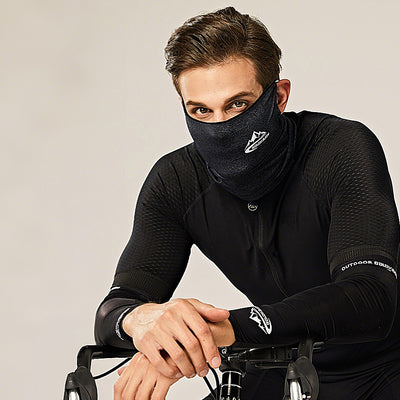What are bike gloves used for?
Bike gloves serve multiple practical and protective purposes for cyclists, catering to both comfort and safety during rides. Here’s a detailed breakdown of their key functions:
1. Protection Against Falls and Injuries
-
 Palm Padding:
Palm Padding:
- Thickened padding (often made of gel, foam, or synthetic materials) on the palm absorbs impact during crashes, reducing the risk of scrapes, bruises, or fractures on the hands.
- Example: In a sudden fall, the hands typically hit the ground first; gloves act as a barrier between skin and rough surfaces (pavement, gravel, or dirt).
-
Knuckle and Finger Coverage:
- Some gloves (e.g., mountain bike or full-finger gloves) include reinforced materials on the knuckles to protect against bumps from handlebars, branches, or debris.
2. Enhanced Grip and Control
-
Non-Slip Materials:
- Palm surfaces are often made of grippy fabrics (like synthetic leather, silicone patterns, or rubberized coatings) that improve traction on handlebars, especially in wet conditions (rain or sweat).
- This prevents hands from slipping, which is crucial for maintaining control during sharp turns, braking, or rough terrain.
-
Reduced Vibration:
- Padding also dampens vibrations from rough roads or trails, preventing “hand numbness” (common in long rides) and allowing cyclists to keep a firm grip.
3. Comfort and Moisture Management
-
Cushioning for Long Rides:
- Padding relieves pressure on the ulnar nerve (which runs through the palm) and bony areas, reducing discomfort during extended cycling (e.g., century rides or multi-day trips).
- Sweat Wicking:
4. Weather Protection
-
Warmth in Cold Conditions:
- Winter gloves are insulated (with materials like fleece, neoprene, or Thinsulate) to retain heat, while waterproof layers prevent hands from getting cold and wet in rain or snow.
-
Sun Protection:
- Fingerless or summer gloves often use UPF-rated fabrics on the back of the hands to block UV rays, preventing sunburns during long rides in sunny weather.
5. Abrasion Resistance and Durability
-
Reinforced Wear Areas:
- High-friction zones (like the heel of the palm and finger tips) are often double-stitched or made of tougher materials to withstand constant contact with handlebars and brake levers.
-
Extended Lifespan:
- By protecting the hands, gloves reduce the need for cyclists to replace worn-out handlebar tape as frequently.
6. Specialized Types for Different Cycling Styles
-
Fingerless Gloves:
- Popular for road cycling or warm weather, they offer palm protection while keeping fingers free for dexterity (e.g., shifting gears or handling water bottles).
-
Full-Finger Gloves:
- Common in mountain biking, commuting, or cold weather; they provide extra protection for the fingers and knuckles against debris, thorns, or low temperatures.
-
Race Gloves:
- Lightweight and minimalistic, designed for aerodynamics and speed (e.g., in time trials or triathlons), with minimal padding to reduce bulk.
- Gel-Padded Gloves:
7. Additional Benefits for Specific Users
-
Therapeutic Support:
- Cyclists with arthritis or carpal tunnel syndrome may use gloves with extra padding to alleviate hand pain.
-
Style and Branding:
- Gloves can match cycling kits or display team logos, adding a personal or competitive touch.
Conclusion
Bike gloves are a versatile accessory that balances protection, comfort, and functionality. Whether you’re a casual rider, a mountain biker, or a long-distance cyclist, choosing the right gloves (based on weather, terrain, and ride duration) can significantly enhance your experience and safety on the bike. Always prioritize fit, padding, and material quality to ensure they meet your specific needs! 🚴♂️
Categories
Recent Posts

Newsletter Signup
Enter your email to receive daily news and get 20% off coupon for all items.
Popular Products
Magnetic Absorption Half Face Mask
Regular price
$14.50
Winter Cycling Gloves for Men - Thermal Gloves for Skiing Snowboarding Cycling
Regular price
$19.90
Winter Neck Gaiter Face Cover - Thermal Face Mask for Skiing Cycling
Regular price
$13.30







